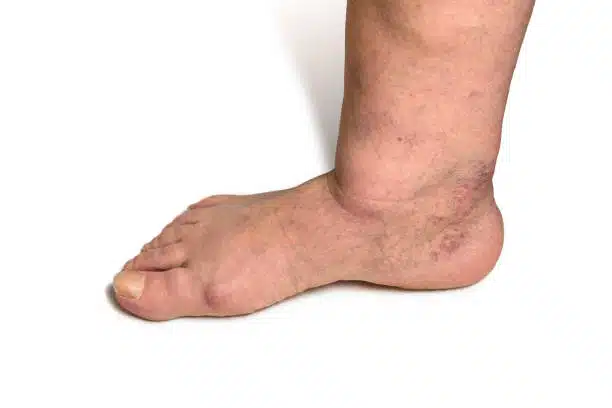
People with diabetes who fail to keep their blood sugar level in a normal range often develop serious problems, including diabetic foot disease.
Foot problems resulting from diabetes include diabetic neuropathy, blisters, diabetic ulcers, diabetic calluses, foot infections, and even amputation. Diabetic foot problems occur when high blood sugar levels cause nerve damage and poor circulation in your legs and feet.
Let’s talk about some common treatments a foot and ankle doctor offer for diabetic feet and where you can go for treatment and care for a diabetic foot in North Dakota.
Treatment of Diabetic Foot
Diabetic feet can be treated with a range of surgical and nonsurgical treatments. The right treatment for your diabetic foot problems varies according to the severity of the diabetic foot problem, your age, and overall health.
Nonsurgical Treatment
Your foot and ankle doctor will first use nonsurgical options to treat diabetic foot problems. These options include:
- Diabetic foot care tips are mentioned below
- Medications like antibiotics to treat foot infections and relieve foot pain
- Immobilization devices such as a total contact cast or a walking cast
- Close observation (to check for the progression and deterioration of the foot condition)
- Physical therapy, exercise, and diet changes
Surgical Treatments
When nonsurgical options do not successfully treat diabetic foot problems, your doctor may recommend surgical treatments. The surgical option for diabetic foot treatment may include:
- Removing ingrown toenails
- Performing procedures like endovascular surgery with stent placement to keep the blood vessels open
- Performing procedures like an arterial bypass to assist blood flow to the area
- Removing dead or decayed tissue
- Amputating the affected foot or the limb
Diabetic Foot Care Tips
People with diabetes can follow the tips below for good foot care.
Manage Your Diabetes.
Keeping your blood sugar level in a normal range can help reduce the chances of developing diabetic foot disease complications. To do this, follow your doctor’s advice regarding exercise, nutrition, and medications.
Keep Your Feet Neat and Clean.
Wash your feet daily with warm water and mild soap. Do not soak your feet in the water. After washing, pat dry your feet with a towel rather than rubbing them.
Inspect Your Foot Daily.
Check your feet daily for any signs of blisters, cuts, sores, redness, calluses, and other problems. Consult your foot and ankle doctor if you have any of these problems in your feet’ skin.
Keep Your Feet Warm and Moist.
The dry skin of the feet can crack, increasing the risk of infections. So, always keep the skin of your feet soft and moist. It’s also recommended to keep your feet warm and not get wet in rain or snow.
Do not apply moisturizer between your toes.
Choose Your Shoes Carefully.
An ill-fitting shoe can cause foot diabetic foot ulcers and lead to infection. So, always buy comfortable shoes. Before buying a new pair of shoes, check how your shoe fits in length, width, back, sole, and bottom of the heel. You can also consult your foot and ankle doctor to find the best pair of shoes or orthotics for you.
Promote Blood Flow to the Feet.
To promote healthy blood flow to the feet, prop up your feet and legs when sitting, wiggle your toes and feet periodically, and get some exercise.
Diabetic Foot Care in North Dakota
Whether you have diabetic foot pain, arthritis, or other foot and ankle injuries, our orthopedic doctors at The Bone & Joint Center are ready to help you. We offer a wide variety of advanced treatments for diabetic foot problems and other foot and ankle disorders to bring you relief.
Want to set up a private consultation with our foot and ankle doctor? Call us today at (800) 424-2663 or fill out our easy-to-use appointment request form.

